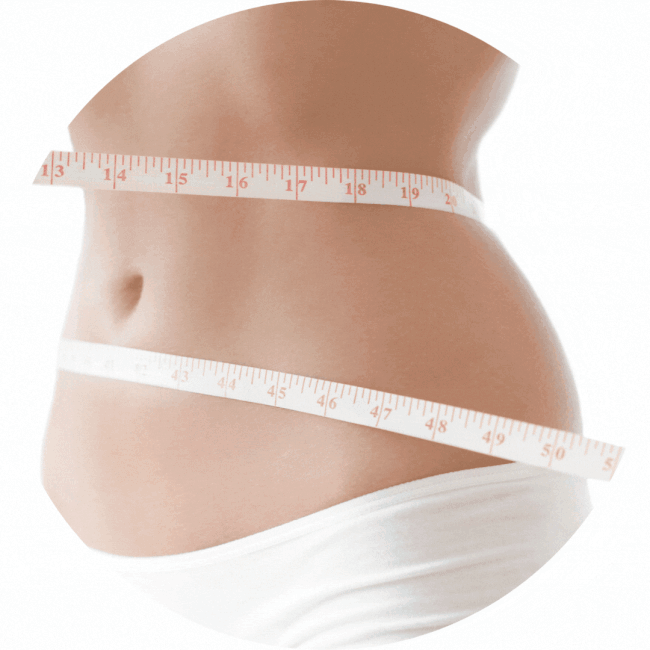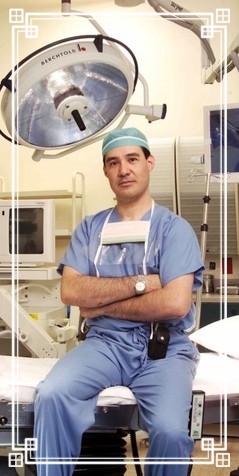Abdominoplasty (tummy tuck)

ABDOMINOPLASTY or TUMMY TUCK (DERMOLIPECTOMY)
If you’re considering an abdominoplasty....
Abdominoplasty, commonly known as a “tummy tuck”, is a surgical procedure to remove excess skin and fat from the middle and lower abdomen and to tighten the muscles of the abdominal wall. The procedure can dramatically reduce a protruding abdomen.
With abdominoplasty we not only eliminate stretch marks and scars located below the navel line but we can also correct hernias, and other defects of the abdominal wall.
If you’re considering body contouring, this information will help provide a basic understanding of what an abdominoplasty can and cannot achieve. Because fatty deposits and loosen skin affects each individual patient differently no amount of written information can replace a personal consultation with Dr. Gomez-Mendoza and his team.
The following information is strictly the opinion of Dr. Gomez-and pertains to his personal technique of abdominoplasty and other body contouring procedures as performed by him.
Who are the best candidates for abdominoplasty?
The best candidates for abdominoplasty are those bothered by large fat deposits or loose skin and stretch marks that will not respond to diet or exercise. This surgery is especially beneficial to women who, through multiple pregnancies, have stretched their abdominal muscles and skin beyond the point where they can return to their previous state.
Abdominoplasty can enhance your appearance and your self-confidence, but it will not necessarily change your looks to match your ideal.
In your initial consultation we will evaluate your health, determine the extent of fat deposits in your abdominal region, and carefully assess your skin tone. If for example, your fat deposits are limited to the area below the navel, you may require a less complex procedure called a partial abdominoplasty, also known as a mini-tummy tuck, which can often be performed on an outpatient basis. You may, on the other hand, benefit more from partial or complete abdominoplasty done in conjunction with liposculpture to remove fat deposits from the hips, for a better body contour. Or maybe liposuction alone would create the best result.
So partial abdominoplasty is done on an outpatient basis, and complete abdominoplasty require an inpatient basis.
How do I prepare for my abdominoplasty?
Abdominoplasty and all body contouring procedures must be individualized for each patient; Dr. Gomez-Mendoza will evaluate your body, including your skin, and with your assistance, make recommendations as to the specific procedures that will most likely help you achieve your aesthetic goals. A detailed history of medical conditions that could affect your surgery will be obtained including use of medications, vitamins, etc.
You will be given detailed written instructions on how to prepare for your surgery including guidelines on eating and drinking, smoking, and avoidance of certain vitamins and medications. If you smoke it’s especially important to stop (and also to avoid second-hand smoke) for at least two weeks prior to surgery because of the deleterious effect of smoking upon the healing process. Carefully following these instructions will help your surgery go more smoothly. In addition, we'll also be available to answer any questions you might have or any concerns that arise. Please don't hesitate to call us.
Where will your abdominoplasty be performed?
Dr. Gomez-Mendoza performs most abdominoplasty procedures at the modern Puerta de Hierro Medical Center, or at one of the many Guadalajara or Puerto Vallarta-area hospitals where we currently enjoy operating privileges. Whether you choose to have your procedure done in the peaceful seclusion of our state-of-the-art Medical Center, or an area hospital; rest assured that you will receive the finest care available.
What type of anesthesia is used?
Dr. Gomez-Mendoza performs most body contouring procedures, including abdominoplasty, under sedation some patients refer to this as "twilight" type anesthesia (gentle, short-acting medication is administered by a board certified anesthesiologist to insure comfort and security for our patients) and regional anesthesia. Patients are under monitored anesthesia care since they arrive to the operating room till they leave the recovery area; ensuring that you receive the safest care possible. The expert care you deserve.
Our patients recover more quickly and with less discomfort than when general anesthesia is used. But you may select general anesthesia if you want.
About the surgery....
Complete abdominoplasty usually takes two to five hours, depending on the extent of work required. Partial abdominoplasty may take an hour and a half to three hours.
Most commonly, the surgeon will make a long incision from hipbone to hipbone just above the pubic area. A second incision is made to free the navel from surrounding tissue. With partial abdominoplasty, the incision is much shorter and the navel may not be removed, although it may be pulled a little bit down as the skin is tightened and stitched. Next, the surgeon separates the skin from the abdominal wall all the way up to your ribs and lifts a large skin flap to reveal the vertical muscles in your abdomen. These muscles are tightened by pulling them close together and stitching them into their new position. This provides a firmer abdominal wall and narrows the waistline. The skin flap is then stretched down and the extra skin is removed, a new hole is cut for your navel, which is then stitched in place. Finally, the incisions will be stitched (we only use absorbable sutures placed in an intradermal running fashion so you will not see them and they do not need to be removed). This technique obviates the need for external skin sutures and circumvents the possibility of suture marks.
Dressings will be applied, and a temporary tube may be inserted to drain excess fluid from the surgical site.
In partial abdominoplasty, the skin is separated only between the incision line and the navel. This skin flap is stretched down, the excess is removed, and the flap is stitched back into place with the same kind of sutures described before.
After your surgery....
You’ll wear a support (compression) garment over your gauze dressings.
For the first few days, your abdomen will probably be swollen and you are likely to feel minor pain and discomfort which can be controlled by medication. Depending on the extent of the surgery, you may be released within a few hours or may have to remain hospitalized for one to two days. And though you may not be able to stand fully straight at first, you should start walking as soon as possible.
It may take you weeks to feel like your old self again, if you start out in top physical condition with strong abdominal muscles, recovery from abdominoplasty will be much faster.
Almost all our patients return to work after two weeks. You will wear the compression garment around the clock for four to eight weeks.
Your scars may actually appear to worsen during the first two to three months as they heal, but this is normal. Expect it to take six to nine months before your scars flatten out and lighten in color.
It's important for you to keep in mind that healing — of any form — is a gradual process during the initial phases of recovery, you'll experience minor pain and discomfort along with swelling and bruising around the operative areas in some cases. This is normal. It's also not unusual to feel depressed in the days following surgery. Again, keep in mind that this is normal and will subside as you begin to look and feel better.
Full recovery usually takes three to four weeks.
Abdominoplasty, whether partial or complete, produces excellent results for patients with weakened abdominal muscles or excess of fat and skin. And in most cases, the results are long lasting, if you follow a balanced diet and exercise regularly.
Are there any risks?
When an abdominomplasty is performed by a qualified plastic surgeon certified by the Board of Plastic Surgery, complications are infrequent and usually minor.
While Dr. Gomez-Mendoza and his team make every effort to minimize risk, individuals vary greatly in their anatomy, their healing ability as well as in their reactions to surgery and anesthesia. Complications that may occur include minor haematoma (a small collection of blood beneath the skin), infection, poor healing and reactions to medications. You can reduce your risks by closely following the advice of your surgeon concerning your pre-operative and post-operative care. There are not risk free surgical procedures.
To contact plastic surgeon Dr. Jesús Gómez Mendoza about any cosmetic surgery procedures, please fill out our contact form or call us at +52 (33) 3848-5477 in Mexico.
DR. JESÚS CARLOS GÓMEZ MENDOZA
Cirujano Plástico Estético y Reconstructivo UNAM
Ced. Prof. 1380418
Ced. Esp. 3223900
Certificado por CMCPER No. 682
Aviso de publicidad COFEPRIS 213301202A0627
CIRUGIA ESTETICA GUADALAJARA
Tel. (33) 3848-5477
Suite 307-B
Blvd. Puerta de Hierro # 5150
Zapopan, 45116
Horario:
Lunes a viernes
10:00am a 02:00pm
04:00pm a 08:00pm
Sábado
10:00am a 02:00pm
Especialista en Faloplastia, cirugía facial y corporal masculina

LINKS RÁPIDOS:
- Rinoplastia o Cirugia de Nariz
- Faloplastia
- Operacion de orejas o Cirugias de orejas
- Cirugia Estetica de Pantorrillas o implantes de pantorrillas
- Lipoescultura para hombres
- Cirugias Lipoescultura
- Levantamiento de senos
- Cirugia Plastica de Senos
- Lipoescultura laser costo
- Abdominoplastia o Lipectomía
- Liposuccion
- Implantes gluteos
- Lifting facial
- Blefaroplastia o Cirugia de Parpados
- Faloplastia precio
- Faloplastia antes y después















